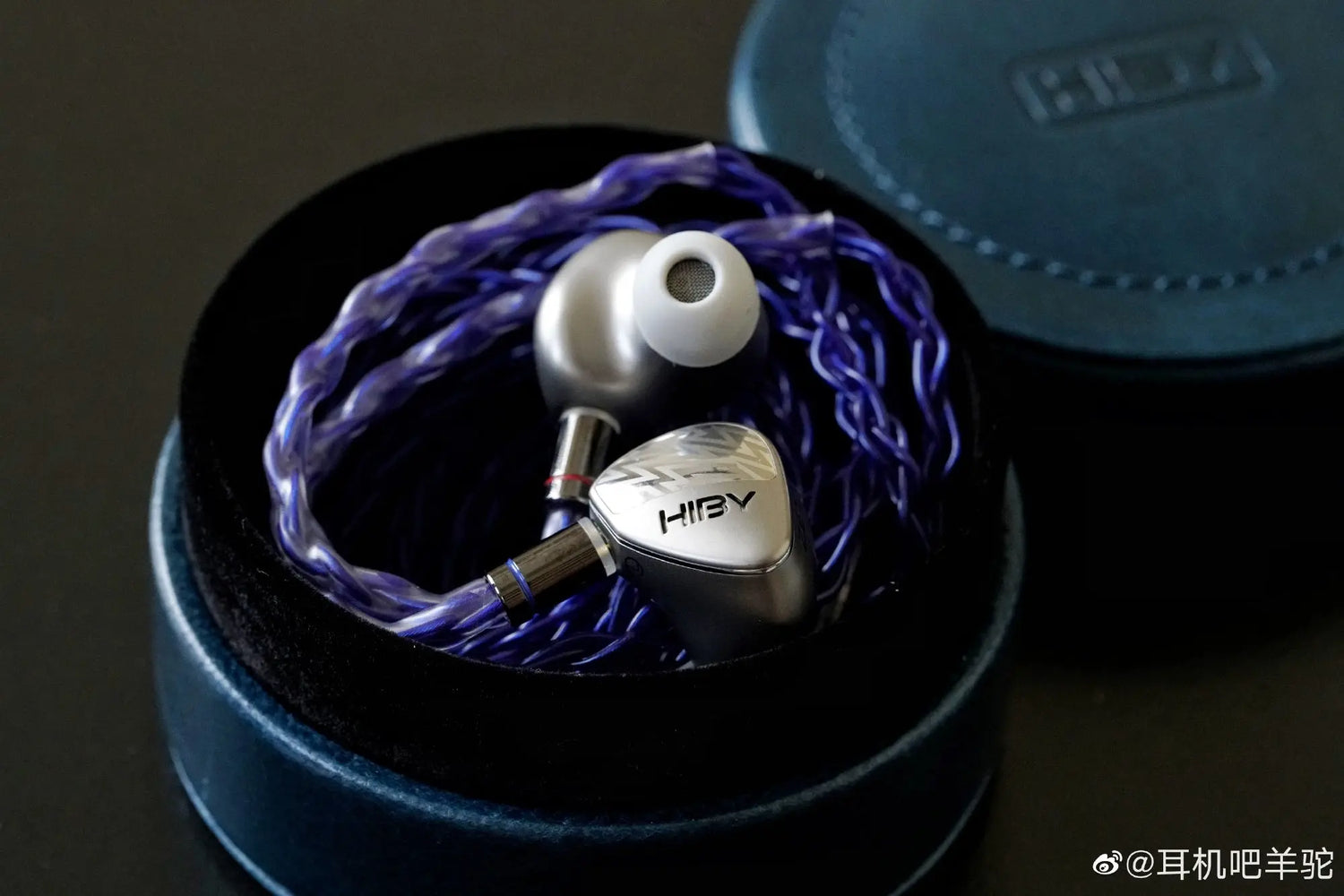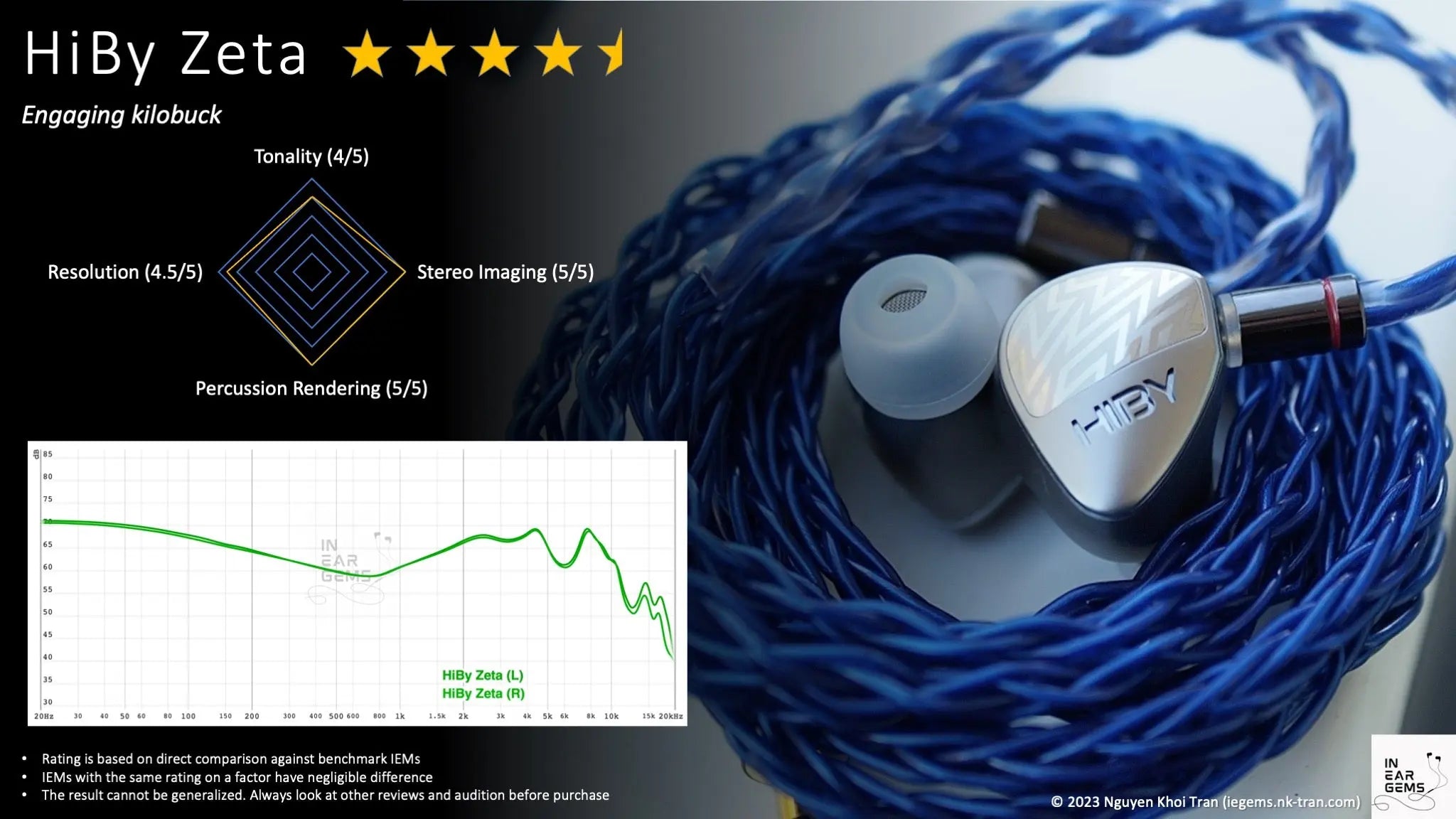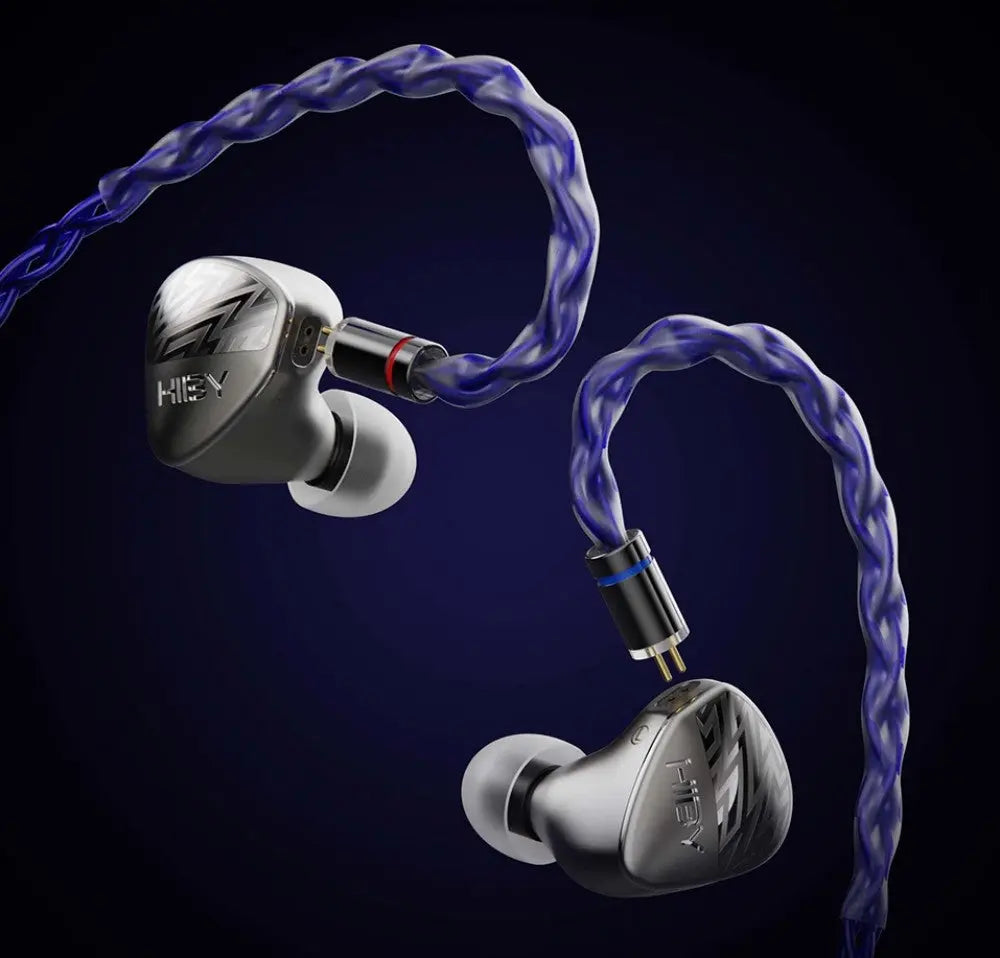A love letter - To HiBy ZETA
Many people may have seen this before, but just to prevent any accidents, I'll say it again: Throw away the default transparent cover and replace it with a gray one.

Now we can get down to business.
To be more serious, let's talk about HiBy ZETA first. HiBy ZETA is the first flagship earphone and the first work after the replacement of the HiBy earphone department's helmsman.
This first launch was quite successful.
At this year's Guangzhou exhibition, I focused on portable products. Haibei ZETA ranked second on my list of new products at the exhibition, second only to the first-placed HiFiMAN ATHENA portable headset. It can also be said that ZETA was the number one earphone I heard at the exhibition.

I forgot which booth I met the owner of a certain brand and asked casually what good things they had heard. He thought for a moment and said seriously, "The new electrostatic earphone from HiBy sounds good, and also the new headset from HiFiMAN."
I am familiar with this conversation. Whenever I go to the exhibition, I would grab a few friends with different music tastes and ask them what they've heard. As I am a fan of pop music, I usually grab a few friends who like classical music and ask them the same question. This year, the friends I grabbed almost unanimously mentioned ZETA as the first thing that came to their minds. Although I don't believe that ZETA is a completely biased classical earphone, it must be admitted that its overall style and direction have a great appeal to classical music enthusiasts.
ZETA is not a purely classical earphone in the traditional sense, nor is it similar to the positioning of the Final F3100 or the IE8 of the past. I believe that ZETA should be considered as an all-round earphone that excels in performing large-scale classical music while also considering popular music and small-ensemble instrumental music. It also takes into account the requirements of large-scale classical music for a high soundstage, high separation and low-frequency support, while also having the overall thickness, density, and flavor required for a diverse range of musical genres.

First of all, the low frequency is what impressed me the most about ZETA. ZETA has a very high-quality low frequency, and I need to repeat that - a very high-quality low frequency. It has excellent depth, cohesion, elasticity, and outstanding mid-to-low-frequency harmonic support, which I really love. Especially the location where the low frequency dives deep and concentrated is also very low, which adds to the sensory extension of the low-frequency energy. So, compared to several ultra-flagship earphones, it can be said that the low-frequency quality of ZETA is currently top-notch. In contrast, I have heard too many tuning styles in flagship and ultra-flagship earphones that exhibit "analytical sense" with rough low-frequency sound. The low-frequency extension of ZETA is so smooth that it even gave me the feeling of "I can't go back to other earphones".
One thing to note is that the speed of the low frequency is slightly slow. It is not sluggish at all because the recovery is clean, the downward extension is full, and there is no accumulation of energy in the middle of the dive. It is not a slow "boom" sound with a lot of residue, but a slow and elastic sound with a full sense of texture. In pop music, drum accents with this low frequency effect may be slightly more noticeable than the presence of what we usually expect, and it takes some adjustment. However, when you randomly play a classical piece, whether it's a large or small ensemble, and hear the direct impact of the diving and energy that the ZETA's low frequency delivers, it's not the rumbling from the casual boom, but a high-quality low frequency that simulates a live and bodily sensation. At that moment, I understood the love of classical music enthusiasts for this earphone.
However, I am a fan of pop music, so my love for ZETA also depends on its vocal performance. For me, the vocal performance of classical earphones, like that of the IE900, is considered good if it achieves decent mid-frequency thickness and density. However, ZETA gave me an excellent answer. Its outstanding thickness and density across the entire frequency range are also maintained in the mid-frequency range, giving the vocals a rich, delicate, and compact feel with full energy. On this basis, ZETA also presents a clear, three-dimensional, and precise vocal pronunciation, without any tendency to blur or smear that I had anticipated, and even this combination of precision and delicacy makes female vocals sound sweet and accurate, without affecting male vocals' precise performance. It is definitely top-notch even for just listening to pop performances.
Finally, let's talk about high frequency. The use of four electrostatic units is purely for the display of high and ultra-high frequencies, and ZETA's use of these four units is very much in line with my expectations. The overall trend is a smooth, delicate, and natural extension, not immediately noticeable at first listen. But upon comparison, it becomes apparent that this is a high frequency that has extremely strong revealing power, with an extremely clear and detailed line and picture. Coupled with the overall full harmonic treatment, the performance of instruments in high frequency, whether piano or strings, is extremely beautiful, vivid, and full of airiness. What surprised me even more is that, in direct comparison with my own true love, ZETA’s high frequency presented much richer high-frequency details and clearer shape depiction in a delicate and non-aggressive way, making the live performances sound more vivid and lively. Just like when evaluating the low-frequency, it also gave me the feeling of "I can't go back after listening". Suddenly, I felt a sense of panic that I might have betrayed my true love.

So what kind of music is this sound suitable for? Classical and large orchestral pieces are definitely its forte. I have also evaluated ZETA on the Guangzhou ranking list, and I believe that ZETA can be considered an improved version of IE900. It is top-notch in terms of both the grandeur and atmosphere of classical music, as well as the stability and expressiveness of low frequencies and musical instruments. Although I don't think the soundstage of ZETA is as big and boundless as some other IEMs, it is still spacious and has a good sense of depth. The density is also well-filled, making it an appropriate choice.
Small ensembles and instrumental solos are the best, and the overall tone and imaging accuracy make the instruments full of vitality and beauty. However, the pairing with different front-end equipment may result in some differences in sound style, which I will discuss later. Even metal and rock music sound great, with slightly slower low-frequency recovery, but the full and vibrant sound is still enjoyable.
For pop music, ZETA's vocal performance is really good. However, I still scrutinize ZETA's occasional drum beats in pop music with a demanding attitude, which seem to be slightly more prominent than usual, as they give me a desperate reason to not switch back to my old favorite headphones.

Let's talk about pairing.
The front-end equipment used in the review was the Cayin N82, which may not be the ideal match. However, I really like the precise high frequency style of the N82 itself complementing the detailed imaging of ZETA. The sound is elegant but solid, and the clean and fast characteristics of the N82 suit ZETA perfectly. If paired with the in-house RS8, which has a rich harmonic overtone, the sound may appear less transparent and less clean-cut than with the N82. Even downgrading to the sub-flagship level, using an accurate, neutral and precise player like the Kann Max to experience ZETA's high frequency may provide a similar appeal as with the N82.
Of course, pairing with the RS8 offers another beautiful sound signature. The high frequency of the RS8 produces the effect of being close to the instrument, with a clearer line and richer details, which intensifies the perception of energy in the body. Under the RS8's drive, ZETA will exhibit a more complete presentation of high-frequency information, resulting in a satisfying, warm and smooth experience. The Cayin N7, which I just recommended, also has a warm sound signature with a strong and controlled high frequency. ZETA makes even the looser high-frequency lines of the N7 clearer and more cohesive, forming a complementary and enjoyable combination. The extremely high-density low-frequency of N7 also blends particularly well with the smooth and deep-reaching low-frequency of ZETA, making it a better match than the N82.
In terms of power, although ZETA is a combination of dynamic and BA drivers, it doesn't require high basic power demands. The overall sound framework and density are quite easy to come by without issues of insufficient extensions at either end. The in-house CoastalHIFI FC4 is a great match, with good overall density and thickness, and sufficient energy at both ends, allowing ZETA to fully play with its stretchy and round sound while maintaining control. However, it is recommended to use front-end equipment with higher resolution to fully unleash ZETA's information and detail rendering capabilities.

After discussing all aspects of the sound, let's talk about the overall impression that ZETA leaves on me. I've also analyzed why I like ZETA. I think ZETA gave me the same excitement as when I first heard Project Y. There is the same accurate sound reproduction, high-density and thick sound style, abundant energy in the high and low frequencies, high-quality extension, and even the same electrostatic hybrid and the same top-notch driver configuration with high value-for-money. However, at the same time, ZETA seems to be like the route PY takes after entering another river, with a more classical low-frequency tuning, a larger soundstage, stronger quality in both high and low frequencies, and richer harmonics, ultimately achieving another peak.
To go even further, after entering the world of IEMs with the T2 Pro, upgrading to ZETA directly can expand your music experience and improve your resolution, control, scale and even music literacy. If T2 Pro is the IEM that I think everyone should buy under $100, then when it comes to $1000, I believe that ZETA should be the first stop for audiophiles to upgrade and stay for a long time, and it may even be the final destination.

At this point, we've analyzed all aspects of the sound in detail. In this concluding section, I want to share my personal journey in writing this review.
When I first heard about the ZETA IEM and saw the physical product, my initial impressions were probably similar to many others: a player manufacturer's first flagship, flashy specifications, mixed materials and a potentially overhyped product. In the past, HiBy's earphone offerings have not engendered much confidence for me. Many of their midrange IEMs have had unique sound characteristics, but have only paired well with certain source equipment.
As a result, I did not have high expectations for the sound quality or overall level of the ZETA during my initial impressions. In fact, my first impression wasn't great because I was using the default transparent tips and had not yet burned them in. The resulting sound was congested and lacked extension in both the highs and lows, with an accumulation of energy. This reinforced my preconceptions about the ZETA, and I thought that HiBy's first flagship IEM did not surpass the level of their previous earphones. Consequently, I did not spend much time exploring or experimenting with them during the burn-in process.
Finally, I decided to try them with the grey tips that came in the box, which was essentially a desperate attempt during the review process. However, this small decision allowed me to discover the true essence and capabilities of these IEMs.
While using the grey tips, I repeatedly broke through my preconceived notions and self-contradictory judgments. Especially after comparing them to other IEMs, ZETA even made me feel a sense of panic as if I was falling in love with them - a feeling I had never experienced with any other earphones.
As a flagship IEM produced by a player manufacturer, ZETA naturally faced many preconceptions and labels, but regardless of future sales strategies or mainstream evaluations, at the moment, at least at that moment, it made me fall in love with it and praise it wholeheartedly. This review is my letter of apology and a love letter to ZETA.




